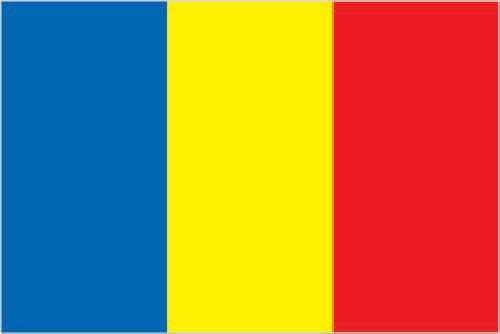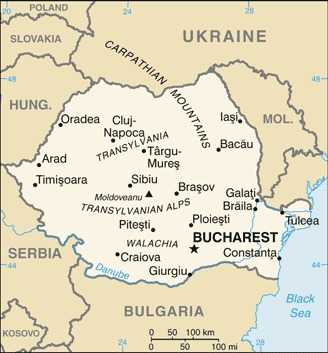Introduction
Background
The principalities of Wallachia and Moldavia - for centuries under the control of the Turkish Ottoman Empire - secured their autonomy in 1856. They were de facto linked in 1859 and formally united in 1862 under the new name of Romania. Romania joined NATO in 2004, the EU in 2007, and the Schengen Area for air and sea travel in 2024.
Geography
Area
total: 238,391 sq km
land: 229,891 sq km
water: 8,500 sq km
Climate
temperate; cold, cloudy winters with frequent snow and fog; sunny summers with frequent showers and thunderstorms
Natural resources
petroleum (reserves declining), timber, natural gas, coal, iron ore, salt, arable land, hydropower
People and Society
Population
total: 18,148,155
male: 8,747,795
female: 9,400,360 (2024 est.)
Ethnic groups
Romanian 89.3%, Hungarian 6%, Romani 3.4%, Ukrainian 0.3%, German 0.1%, other 0.9% (2021 est.)
Languages
Romanian (official) 91.6%, Hungarian 6.3%, Romani 1.2%, other 0.7% (2021 est.)
note: data represent individuals who declared a maternal language in the 2021 national census; 13.1% did not respond
Religions
Romanian Orthodox 85.3%, Roman Catholic 4.5%, Reformed 3%, Pentecostal 2.5%, other 4.7% (2021 est.)
Population growth rate
-0.94% (2024 est.)
Government
Government type
semi-presidential republic
Capital
name: Bucharest
Executive branch
chief of state: President Klaus Werner IOHANNIS (since 21 December 2014)
head of government: Prime Minister Marcel CIOLACU (since 15 June 2023); Deputy Prime Ministers Sorin GRINDEANU (since 25 November 2021) and Hunor KELEMEN (since 23 December 2020)
Legislative branch
description: bicameral Parliament or Parlament consists of:
Senate or Senat (136 seats; members directly elected in single- and multi-seat constituencies - including 2 seats for diaspora - by party-list, proportional representation vote; members serve 4-year terms)
Chamber of Deputies or Camera Deputatilor (330 seats; members directly elected in single- and multi-seat constituencies - including 4 seats for diaspora - by party-list, proportional representation vote; members serve 4-year terms)
Economy
Economic overview
high-income, service- and industrial-based European economy; EU member but non-euro user until convergence criteria met; sustained growth prior to COVID-19; major FDI recipient; flat taxation structure; digital hub of Eastern Europe
Real GDP (purchasing power parity)
$618.95 billion (2022 est.)
$591.757 billion (2021 est.)
$559.798 billion (2020 est.)
Real GDP per capita
$32,500 (2022 est.)
$30,900 (2021 est.)
$29,100 (2020 est.)
Agricultural products
wheat, maize, milk, sunflower seeds, barley, potatoes, rapeseed, grapes, plums, apples (2022)
Industries
electric machinery and equipment, auto assembly, textiles and footwear, light machinery, metallurgy, chemicals, food processing, petroleum refining, mining, timber, construction materials
Exports
$129.286 billion (2022 est.)
$115.879 billion (2021 est.)
$93.024 billion (2020 est.)
Exports - partners
Germany 19%, Italy 10%, Hungary 7%, France 6%, Bulgaria 4% (2022)
Exports - commodities
vehicle parts/accessories, cars, insulated wire, refined petroleum, wheat (2022)
Imports
$149.209 billion (2022 est.)
$132.056 billion (2021 est.)
$103.899 billion (2020 est.)
Imports - partners
Germany 17%, Italy 8%, Hungary 6%, Turkey 6%, Poland 6% (2022)
Imports - commodities
crude petroleum, vehicle parts/accessories, refined petroleum, packaged medicine, cars (2022)
Exchange rates
lei (RON) per US dollar -
Exchange rates:
4.688 (2022 est.)
4.16 (2021 est.)
4.244 (2020 est.)
4.238 (2019 est.)
3.942 (2018 est.)
Page last updated: Thursday, May 23, 2024




